What is SEO? Full Explained Step By Step
What is SEO? Full Explained Step By Step
I have talked about SEO a lot, yet again have a deep look in to “what is Seo?” and its important terminologies.
What is SEO? Full Explained Step-By-Step
Think about what number of blog entries individuals distribute every day. WordPress clients alone distribute more than 2 million posts each day. That turns out to 24 Post Per Second. That means that users published around 216 blog posts while you were reading these five sentences.
And that’s only counting WordPress users. If we were to count all blog posts, that number would surely be higher.
This makes it kind of tough to stand out. But you have to if you want to make your blog a successful one.
While I often spend 4-5 hours writing my blog posts, the ten minutes I spend optimizing each post are easily the most important.
No wonder millions of people Google the term “SEO” each month.
On any given day, people conduct more than 2.2 million searches. And that’s just on Google — to say nothing of the other search engines.
Therefore, showing up on the front page of Google can be the deciding factor in a business that’s thriving and one that’s, well, bankrupt.
Read Now –Ranking a keyword in 10 Steps?
But what does SEO even mean?
You probably know that it stands for search engine optimization, but what do you need to optimize?
Is it the design? Or is it the writing? Or maybe it’s the links? or is it the images? or is it HTML, CSS, javascript elements.
Yes, yes, and yes — it’s all of that and more.
Let’s start this SEO guide from the beginning.
Definition: According to Wikipedia, SEO is “the process of affecting the visibility of a website or a web page in a search engine’s unpaid results.”
Alright, let’s translate that to English. Here’s my go at it:
Search engine optimization (SEO) is the process of optimizing your online content so that a search engine likes to show it as a top result for searches of a certain keyword.
Let me break that down even further:
When it comes to SEO, there’s you, the search engine, and the searcher. If you have an article about how to make vegan lasagna, you want the search engine (which, in 90% of all cases, is Google) to show it as a top result to anyone who searches for the phrase “vegan lasagna.”
SEO is the magic you have to work on your article in order to make Google very likely to include your post as one of the top results whenever someone searches for that keyword.
We’re going to dig deep into SEO, but feel free to jump to any section that interests you:
1. Overview
2. On-Page SEO
3. Off-Page SEO
SEO an overview
Now what does that magic look like, and why does it even matter?
Like I said earlier, the vast majority of online experiences begin with a search engine, and nearly 75% of searchers start their searches on Google.
Combine that with the fact that the first five results on Google get 67% of all clicks, and you get an idea of why search engine optimization is so important.
There’s a joke going around the web that highlights how crucial it is to hit the first page of Google.
If you ever need to hide a dead body, you should place it on the second page of Google search results.
If your blog post, article, or product is on any other page of the Google search results than the first, then it’s the equivalent of it not ranking at all.
But to understand how to show up first in the search engine results, you first need to know how search even works.
How Search Works:
Now that you have an idea of the basics of SEO, I’ll take a look at some of its components in detail.
While Google guards their search algorithm pretty well and not all of the over 200 determining factors are public, Backlinko did a great job of compiling as many of them as possible into one big list.
But first, I need to get one thing straight. There are two sides of the SEO force, and you need to choose yours right now.
On-Page SEO
There are three big categories of on-page SEO that you’ll need to take a look at. The first and most important is content.
Read Now –Top 30 On-page SEO Checklist
CONTENT
You’ve probably heard it before: “Content is king.” Bill Gates made this prediction in 1996, and it’s as true as ever today. Why? Because a Google search engine customer is happy when he finds the result that serves his needs in the best way.
When you Google “quick and easy homemade mac and cheese,” Google will put all its energy into delivering to you what Google believes is the best recipe for homemade mac and cheese (that takes little time and uses few ingredients) on the entire web.
QUALITY
While the times, where just delivering the best-quality content would make you stand out from the crowd are long gone, it is still the starting point for any successful SEO effort (and any online business, really).
But coming up with great content is not easy. After all, it means that you have to become a teacher — and a good one at that. Yet, you don’t have to start from scratch. You can often start by piggybacking off of content that others have created and then making it better, longer, and more in-depth.
Or maybe you have your own ideas already. If you do, then it might be worth brainstorm for a while and then come up with a compelling headline to start out with.
Once you start writing, make sure you include all the important ingredients of great content in your blog post.
Even if you’re a complete newbie, you can always take a professional approach to great content by simply committing to make writing a daily habit and work your way up in increments from there.
Keyword research
Doing your keyword research up-front is a crucial part of the great content. Since you ideally want to include your targeted keyword in your post’s headline and throughout the article, you need to choose your keyword before you start writing.
Out of all on-page SEO factors, this is the one you should spend the most time learning. You don’t even need to buy a book. Backlinko’s definitive guide to keyword research will do.
When I say don’t sleep on this, I mean it. There’s a reason we took the time to compile the top 40 posts on keyword research on Kissmetrics.
Use of keywords
Google has gotten smarter over the years. While you should, of course, use your keyword throughout your content, jamming your keyword into your text as much as possible will hurt your rankings rather than improve them.
Keyword stuffing is an absolute no-go these days.
Today, the use of keywords is much more about semantics. Google has gotten so good at interpreting the meaning of searchers’ keywords that it’s creepy.
It not only looks at your keyword but also synonyms of it to understand what you mean when you type in something like “five guys nyc.”
Google will know that you’re probably not looking for five random males, but rather, it guesses that you’re looking for the fast-food chain “Five Guys, Burgers & Fries” by looking at similar searches that may include the keywords “burgers” and “fries.”
As long as you make sure your keyword is present in strategically-important places (like headlines, URL, and meta description), there is no need to mention it tons of times in your text.
Just focus on the reader and seamlessly integrate your keyword a few times.
Direct answers
Finally, Google will sometimes provide searchers with direct answers right on the SERP. If you write your content clearly enough for Google to recognize it as an answer to a particular question, it will show up directly beneath the search bar.
Keyword Selection
We just briefly touched on keyword research. But it’s such a massively important topic that it deserves its own section. The reason is that something like 90% of SEO often revolves around keyword selection.
I just made that stat up, but you get the point. Keywords dictate what each piece of content is about. It dictates what you call your site or how you describe your brand online.
Keywords even dictate how you build links, including everything from the tactics you choose to how you plan on implementing them.
Another common mistake people make is that they stop. Maybe they redesign their website or come out with a new marketing campaign. They do it for a week or two, update their pages, and then stop.
They think keyword research is a one-and-done thing. In reality, it’s the exact opposite. The best SEOs are constantly doing keyword research. They’re also constantly evaluating if the keywords on their existing content still make sense.
Here’s how smart people make bad keyword decisions.
Common keyword research mistake #1:
Picking the wrong keyword. Let’s say you sell consulting services.
Your service might cost customers $10,000 over the course of a year.
That’s a little less than a thousand bucks a month, so it’s not out of the question.
But it’s still fairly expensive.
Now, if you’re ranking #1 for “free business growth tips,” guess what kind of audience you’re going to attract?
You’ll bring in people looking for free stuff! And that means that they probably won’t hand over their credit card the moment they hit your site.
That one keyword could send your site thousands of people each month.
However, it’s probably the wrong audience. So it doesn’t make sense to rank for it!
You’d be better off picking a different keyword even if it means giving up 990 visits a month.
Think about it: if just one or two people who read that convert, you’re already ahead.
This isn’t the only common mistake I see, though. In fact, this next one is even more common.
Common keyword research mistake #2:
Ignoring the competition. You’ve selected the right keyword from the get-go.
It’s contextually relevant to what you do. And it better aligns with what you’re trying to sell.
So what is the very next thing you do?
You open up a keyword volume tool like the Google Keyword Planner or even a paid one like SEMrush.
You type in a few ideas and get the results back.
Naturally, you start gravitating toward the ones with the highest number of searches.
But here’s the thing you’re missing.
Your ability to rank for a keyword often depends more on the competition you’re up against.
Check out the keyword “content marketing,” for example.
It gets around 6.5-9.5k monthly searches. That’s pretty good!
It’s not one of the most popular on the web by any stretch. But it’s a good start.
The problem happens when you compare your own site to the ones currently ranking.
Do you see the domain and page authorities for those sites?
Do you see the number of linking root domains they each have?
It would take most websites months (if not years) to get anywhere close.
That means that your chance of pushing one of us out of the top three is slim to none.
So what happens next?
People go straight to long-tail keywords as a result.
They assume that just because the volume will be much lower for these, the competition will be, too.
Unfortunately, that’s not always the case.
Check out the “content marketing agency” search query to see why.
The volume is way less at only around 100 visits. It seems like the perfect long-tail keyword.
Except, there’s just one problem. Check out this competition.
All of these sites have been around for years. They all have hundreds (if not thousands or tens of thousands) of links.
The competition for this query is just as competitive as the first popular one.
So this one is worse than the first one. If you were to somehow rank at the top of this one, you’d barely get any traffic!
The demand for this query is just too low given the high competition level. So once again, it doesn’t make sense. What do you do next?
How can you possibly find keywords that are:
1. Relevant to your business
2. Not too competitive
3. But still, provide enough traffic to be worth the effort?
That’s the golden question.
The answer is that you have to think outside the box. Here’s how.
Keyword research tip #1:
Focus on search intent. Most people focus on keywords. Counterintuitively, that’s now what you want to do.
Instead of looking at what people are typing in, you should be trying to identify what they’re searching for.
This is what “search intent” refers to.
And it’s the difference between getting a tiny bit of traffic and driving real revenue.
Let’s kick things off with a basic scenario to highlight the difference.
You own a job site.
You make money by getting companies to run job post listings on your site.
That means that you need to get job pages ranking well so that people come to your site instead of Indeed or somewhere else.
The more people who find jobs through you, the more you’ll get paid.
But watch what happens with a keyword like “engineering jobs.”
The results are all over the place!
Some refer to mechanical engineers while others focus on software or entry-level positions.
The intent behind each search is completely different.
That’s what you need to pinpoint.
What exactly is this user looking for? Which type of engineering job are they interested in?
Fortunately, this problem highlights how we can eventually solve it by coming up with good keywords that aren’t too competitive.
Indeed.com might be a tough competitor right now. So you need to find different alternatives based on search intent.
First, look at Google’s own suggested searches for that query.
These are other common searches that people perform.
Already, you have a few potentials.
“Mechanical,” “civil,” and “industrial” might be highly competitive. But what about “environmental” or “audio”?
Scroll down to the very bottom of the SERP to get even more suggestions from Google.
The “aerospace” one is especially interesting.
Let’s look at one last example to see the role search intent plays in keyword selection before moving onto another tool.
But let’s start this one with a question:
What is someone looking for when they type “best marketing automation tool” into Google?
Yes, they’re looking for a marketing automation tool. Except, they aren’t ready to commit to one just yet.
Instead, what they’re doing is looking for a way to evaluate alternatives. They’re looking for a side-by-side comparison so they can compare apples to apples.
Now, watch what happens when you run that search query into Google.
Highlighted the first paid result and organic ranking because they’re going after search intent.
They’re trying to understand what people are looking for and not just what they’re typing in. Then, they’re giving it to them.
The other paid results in the middle are just trying to sell you a tool despite the fact that people searching here want to look at multiple options.
Those companies are looking at a list of keywords without considering the underlying motivation of each user.
It’s like tunnel vision.
You pull up a list of keywords in some tool, rank by search volume, and run down the list.
Instead, you need to expand your options like you saw a second ago with Google’s own suggestions.
Answer the public is another of my favorite tools to do this because it uses actual search queries to build a list.
Search for “best marketing automation tools,” and it will break the list down even further.
Title tags are the online equivalent of newspaper headlines. They are what shows up in the tab of your browser when you open a new page.
The HTML tag for them is called title. But when it comes to blogs, it often becomes an h1-tag, which stands for the heading of the first order.
Every page should only have one h1-tag to make the title clear to Google. We’ve shown you how to do this at Quick Sprout University, but the website First Page Sage has compiled a few more things that you can do to get these right.
Meta description
Meta descriptions are what show up as an excerpt when Google displays your page as a result to searchers. It’s easy to spot who’s done their SEO homework and who hasn’t by the meta description.
If you optimize a meta description result, Google will never cut it off and end with “…” or make it seem like it ends mid-sentence. Optimized meta descriptions also often mention the content’s keyword up-front.
You can learn how to come up with great meta tags on Quick Sprout University, and should also check out some good examples to get a feel for descriptions.
Don’t overthink this 160 character text snippet though. When writing it, you should keep the searchers in mind much more than the search engines.
My favorite way to edit both of these is by using the Yoast SEO WordPress plugin.
I use it across a lot of my sites because it’s simply the best SEO plugin on the market.
It’s the most popular, they update it almost weekly, and it includes a lot of advanced time-saving features.
It will not only help you quickly edit your titles and metadata, but it will also:
1. Help you set metadata for each social network so that Facebook, Twitter, etc. will properly format your rich data, such as the images.
2. Dynamically create and update your XML sitemap as your site evolves.
3. Integrate with your Google Search Console out of the box so that you can quickly find and fix the biggest problem areas on your site.
4. And lots more!
For example, instead of having to customize each page or post manually, you can create default settings for your titles and metadata.
Subheadings
I’ve previously identified subheads as one of the seven things every great landing page needs.
Not only do they help format and structure your content and give your readers easy reference points, but they also affect SEO.
Compared to your h1-tags, your h2, h3, h4, and further subheads have less SEO power. But they still matter, so you should use them.
Plus, it’s one of the easiest SEO wins you can get on WordPress.
Off-Page SEO
Alright, time to step outside your house and take a look at the front yard. I’ll now show you four big areas of off-page SEO.
If you want a solid overview on one page, consider looking at Shane Barker’s great infographic.
Read Now – PBN backlinks, Is it safe?
Trust
PageRank, the famous formula that the founders of Google invented, certainly isn’t the only measure they take when ranking pages in the top ten search results.
Trust is getting increasingly important, and most of the recent Google updates have hit spammy and obscure websites.
TrustRank is a way for Google to see whether your site is legit or not. For example, if you look like a big brand,
Google is likely to trust you.
Quality backlinks from authoritative sites (like .edu or .gov domains) also help. There are four parts to building trust.
Website Authority
Google determines the overall authority of your site by a mix of two kinds of authority that you can build:
• Domain authority, which has to do with how widespread your domain name is. Coca-cola.com is very authoritative, for example, because everyone has heard of it.
• Page authority, which relates to how authoritative the content of a single page (for example a blog post) is.
You can check your authority here on a scale of 1-100.
Two other popular authority metrics are the domain and page authority numbers from Moz.
Moz also bases this score out of 100. But it’s a weighted scale.
That means that it’s relatively easy to go from 0-20. However, anything over 50-60 is pretty high.
And 80-90 is often the highest in a particular industry.
Read also – 105 ways to gain high-quality backlinks
Does it matters – Bounce rate
Your bounce rate is simply a measure of how many people view only one page on your site before immediately leaving again.
Content, loading times, usability, and attracting the right readers are all part of decreasing your bounce rate. The math is simple – the right readers will spend more time on a site that loads fast, looks good, and has great content.
The video is another great way to do so, but you need your video content to stand out and deliver. Buffer’s 5-step process is a great place to get started with video.
These website usage metrics give Google indications of quality.
For example, let’s say you’re looking for “pizza” near your home. You click on the first three results to compare each one.
The second and third options look good, so you browse around for a bit. You spend at least five minutes checking out each of those sites.
But the first one didn’t meet your expectations for whatever reason. Five seconds after clicking, you hit the back button to open the other results.
That tells Google something about that site, and it isn’t good.
They’ll factor that information into their results. They’ll see that users aren’t finding that first result helpful for this query. And they won’t hesitate to drop them.
That’s why click-through rates are becoming as important, if not more important, than rankings.
Domain age
Remember the times before young entrepreneurs like me were all the hype? Who were the most respected businessmen around?
It was the old guys. It was the Jack Welches and Warren Buffett’s of the world.
With domains on the Internet, it’s similar. Domain age matters even if they only matter a little.
If you haven’t gotten your site up and running yet, consider finding an affordable, expired domain and using it.
Importance of backlinks
Just by how far you’re into this search engine optimization guide already shows you that the common conception of “backlinks are everything” is just wrong.
They’re only a part of SEO just like all the other areas I covered already. There are plenty of ways to get backlinks.
But no matter what you do, don’t just wait for people to link to you. That’s a fool’s game. You’re going to have to take the initiative and ask for them.
Consider these three factors when trying to get backlinks:
Quality of links
While links are not everything, when looking at links, their quality is everything. The quality of your links matters much more than the number of links you have.
Building quality backlinks are all about reaching out to the right sources and offering value in exchange for a solid link. I show you tons of ways to do this in our advanced guide to link building.
Most people only look at the total number of links.
And that’s a huge mistake for a few reasons:
1. Search engines might ignore the vast majority of links if they’re low-quality or spammy
2. Links from brand new sites are worth more than repeat links from existing sites
3. Links from other websites are worth more than a bunch of inks from your own site (from one page to another).
With all that in mind, now take a look at my site’s link profile. Specifically, focus on the bottom half.
High-quality links matter more than low-quality ones.
“Total Linking Root Domains,” tells you the number of unique sites that link back to you.
Followed, equity-passing, external links pass the most ‘strength.’
Often, the ratio of those numbers compared to the total links is a much better indicator of success.
Anchor text
The anchor text is the text that other sites use when they link to you, and yes, it matters. Differentiating between the types of anchor texts is part of the nitty gritty, but a good rule of thumb is:
The more natural the link text sounds, the better.
Here’s an example: You could either link to a guide on anchor text best practices by linking the words “click here” or by naturally mentioning it in the flow of your writing (like I did in the first half of this sentence).
The second category is called contextual backlinks, and that’s the one you should strive for.
Number of links
Lastly, the number of total links you have mattered as well, and you need to build high-quality backlinks at scale over time.
We just touched on this.
It’s not just total links that you’re after.
However, at the end of the day, the site with the most high-quality links will usually have the better edge. And it also depends on the pages you’re getting links to.
Social Factors
Lastly, let’s take a look at the social factors of off-page SEO. Besides social signals directly from the searcher, there are other ways good results on social media will help you rank better.
Whether that’s directly through more links or indirectly through a PR boost, social matters.
I’ve done several case studies on Quick Sprout, proving that social media is well worth your time.
There are two main factors of influence.
As with the quality of backlinks, who shares matters more than how often. Google recognizes influencers, and when they share your content, their share has more SEO juice than your neighbor’s.
A great way to get influencers to share your content is by giving them a heads-up before you even publish it. Or better still, include them by quoting or interviewing them.
Of course, you should also tell plenty of online celebrities who are already interested in your topic.
Conclusion – What is SEO?
I hope this guide helped you realize that search engine optimization isn’t optional anymore in 2018.
While it doesn’t take a lot of effort to get a few basics right, it might kill your online presence if you don’t.
Don’t worry if you’ve already made some SEO decisions in the past that might not have been the perfect choices.
Just commit to getting started today.
Do your keyword research before you write your next blog post. Then, use your keyword data to optimize the basics, such as your title tags and descriptions.
And who knows – maybe the next time you press publish, you’ll stand out.
After reading this guide, how will you change your attitude toward SEO?
Also Read: Ambedkar Jayanti Status
Also Read: Love Status In Hindi

 OK Ravi
OK Ravi 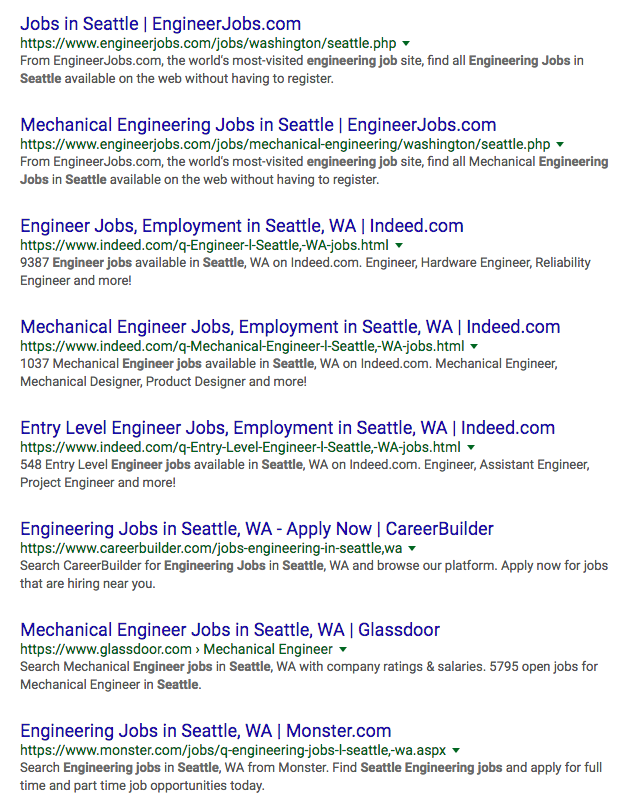
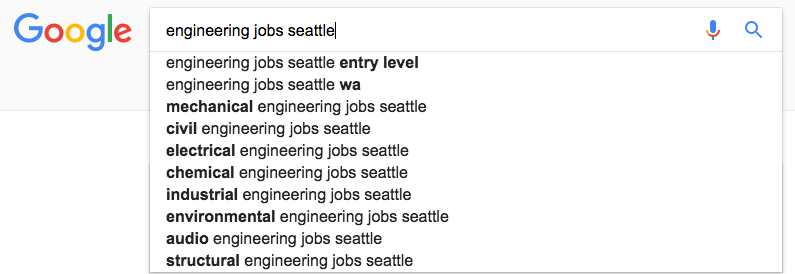
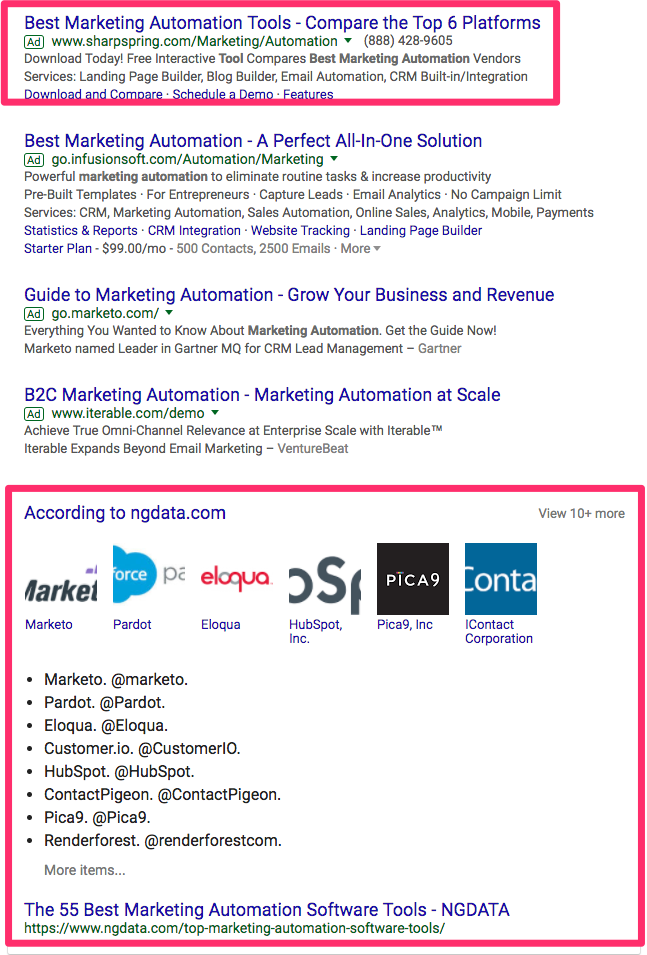


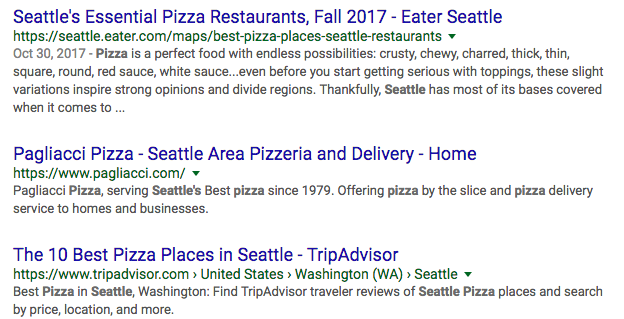



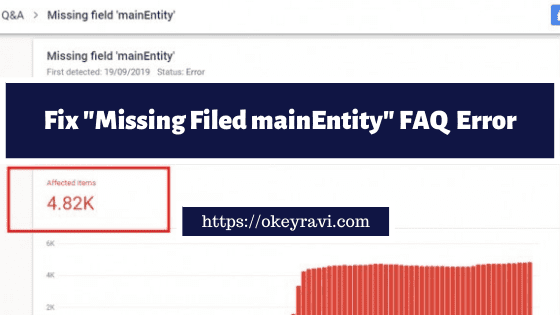
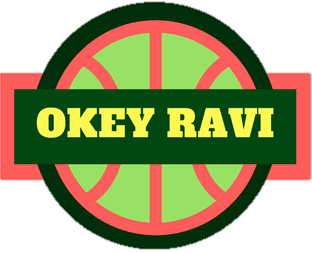
Comments (17)
Tom
Good explanation.
Vijay Kumar
Hello Ravi,
Your all content are unique form other site. Thank you for sharing your all experience with us. I am glad to read your article. Hope you are enjoying the day.
Okey Ravi
Thanks for your appreciation. You would love this also – 7 Common SEO mistakes you should avoid on your website
IIANKITSINGH
Awesome Men Helped A lot Really!!
Okey Ravi
Thanks, you made my day….need any help in SEO then contact…
Raj vadera
Thank you for sharing this informative article.
Bro, you are doing such amazing work and I am also a subscriber of your youtube channel. I follow ur tips and now my site gets a boost. Your SEO tips are really helpful for me.
Thank you once again
Okey Ravi
Thank you, you have made my day…
Okey Ravi
Hey Thanks for the compliments.
moblie
You ought to be a part of a contest for one of the finest sites on the internet. I will recommend this web site!
Sandra W. Tover
Thank you so much
Shubham Raj
From this article, I got lots of information so thanks for sharing these tips.
Okey Ravi
You welcome keep visiting
Raj vadera
Hey Ravi, Amazing article and you explained very deeply. It’s really helpful for everyone. You are doing amazing work.
mjeet kaur
hello sir I really like your article and your YouTube videos because all are very helpful for me thank you so much share your knowledge with us
Okey Ravi
Yes Mjeet, keep reading
Soumya
Excellent article and various activities for SEO listed upon.
Thanks for sharing and good informative post.
Okey Ravi
Ya Seo Is very helpful in ranking so, keep reading
Comments are closed.